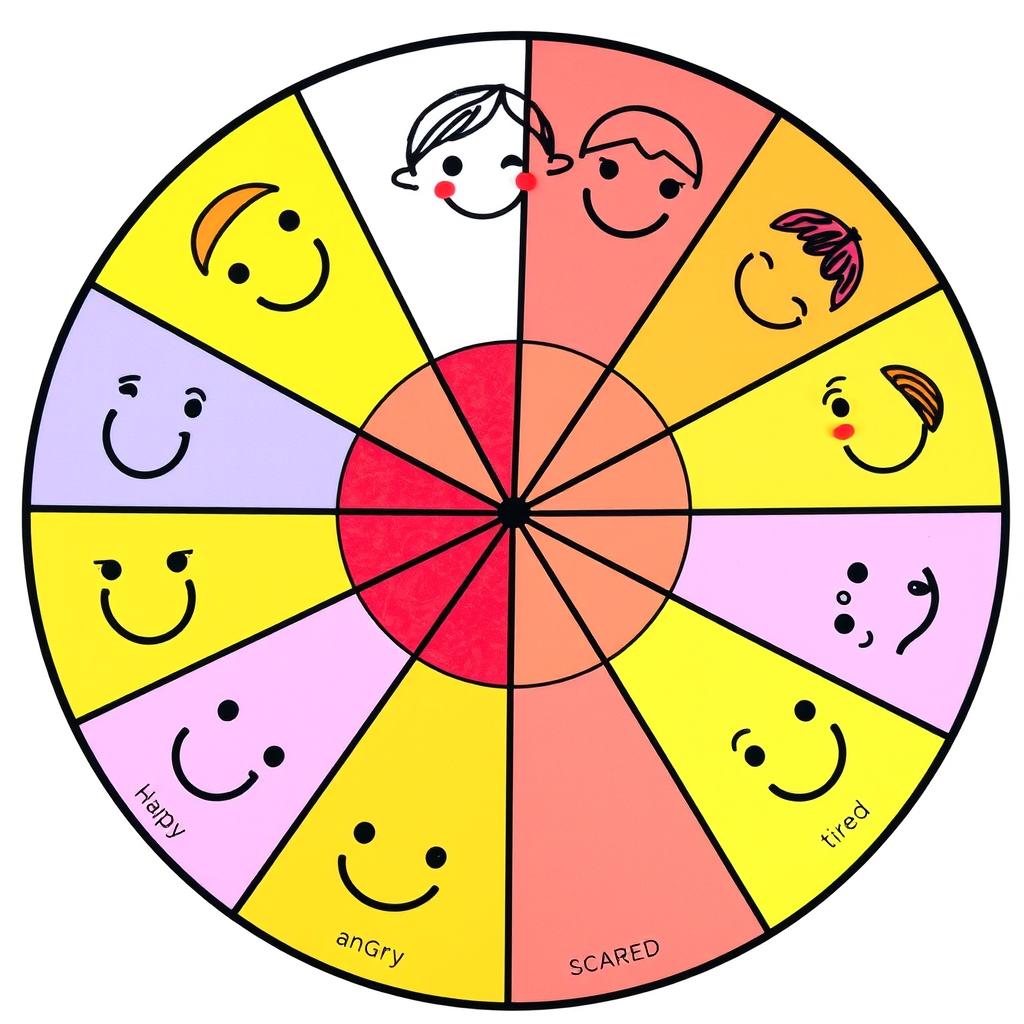How to Deal with Tantrums Positively
Tantrums aren’t signs of bad parenting or a difficult child—they’re simply evidence of a developing brain learning to process big emotions with limited tools. With the right approach, you can help your child navigate these overwhelming feelings while maintaining your own calm and strengthening your relationship.
Understanding the Root of Tantrums
Types of Tantrums: Not All Meltdowns Are Created Equal
Understanding what’s behind your child’s tantrum can help you respond more effectively. Tantrums typically fall into three main categories:
Emotional Overload Tantrums
These occur when feelings become too intense for your child to manage. Their developing brain simply can’t process the overwhelming emotions, leading to a meltdown. Signs include genuine distress, inability to self-soothe, and difficulty communicating.
Attention-Seeking Tantrums
Sometimes children learn that tantrums get a big reaction. These tantrums often have a performative quality—your child might check to see if you’re watching or quickly recover when they get what they want. While all feelings are valid, these tantrums are more about communication than emotional overload.
Physical Needs Tantrums
When children are hungry, tired, overstimulated, or uncomfortable, their ability to cope plummets. These tantrums are often preventable with routine and attention to basic needs. The classic “hangry” meltdown falls into this category.
The Science of Tantrums: What’s Happening in Your Child’s Brain
Tantrums aren’t just about behavior—they’re about brain development. The prefrontal cortex, responsible for emotional regulation, decision-making, and impulse control, isn’t fully developed until the mid-20s. For toddlers, this brain region is just beginning to form.
During a tantrum, your child’s emotional brain (amygdala) takes over while the rational brain (prefrontal cortex) goes offline. This “downstairs brain” activation explains why logic and reasoning don’t work during a meltdown. Understanding this neurological process can help you respond with patience rather than frustration.
10 Positive Ways to Handle Tantrums

When tantrums strike, these evidence-based strategies can help you respond effectively while teaching valuable emotional skills:
- Stay calm and present. Your child co-regulates with you, meaning they look to your emotional state to guide their own. Take deep breaths, speak slowly, and maintain a neutral expression. Remember: you can’t pour from an empty cup, so your calm is essential.
- Validate their feelings. Acknowledge what your child is experiencing with phrases like “I see you’re really upset” or “You’re feeling frustrated because you wanted the blue cup.” Validation doesn’t mean agreement—it means showing your child their feelings matter.
- Offer limited choices. When appropriate, give your child some control through simple choices: “Would you like to put on your shoes before or after breakfast?” or “Do you want to leave the park in five minutes or six minutes?” This sense of autonomy can prevent power struggles.
- Use gentle redirection. For younger children, shifting attention can be effective: “Look at that bird outside!” or “Can you help me count these blocks?” This works best for minor upsets, not deep emotional needs.
- Set consistent boundaries with empathy. Maintain your limits while acknowledging feelings: “I understand you’re upset, but we don’t hit. You can stomp your feet or squeeze this pillow instead.” Consistency helps children feel secure even when upset.
- Create a calm-down space. Designate a comfortable area with soft pillows, sensory toys, and picture books about feelings. This isn’t a punishment but a safe space to process emotions. Introduce this space during calm times so it’s familiar when needed.
- Use physical comfort when welcomed. Some children want physical connection during a tantrum, while others need space. Follow your child’s cues—offer a hug or simply sit nearby, saying “I’m here when you’re ready.”
- Practice deep breathing together. Teach simple breathing techniques during calm moments, like “balloon breathing” (inflate your belly like a balloon) or “birthday cake breathing” (deep breath in, blow out the candles). During mild upsets, gently remind your child to use these skills.
- Name and tame the feeling. Help your child build emotional vocabulary: “It looks like you’re feeling disappointed that we have to leave the playground.” Naming feelings activates the rational brain and begins the calming process.
- Process after the storm passes. Once your child is calm, briefly discuss what happened: “You were really upset when your tower fell. Next time, what could we do instead of throwing blocks?” Keep this conversation short, positive, and focused on future solutions.
“Tantrums are not a sign of disobedience—rather, tantrums are a sign of dysregulation, which means the inability to manage emotional responses.”
Preventing Tantrums Before They Start

While you can’t prevent all tantrums (nor should you—they’re learning opportunities), these strategies can significantly reduce their frequency and intensity:
Establish Predictable Routines
Children thrive on knowing what comes next. Create consistent routines for mornings, mealtimes, and bedtime. Visual schedules with simple pictures can help even very young children understand the day’s flow, reducing anxiety and resistance.
Manage Hunger and Fatigue
Many tantrums stem from these basic physical needs. Pack healthy snacks for outings, stick to regular meal and nap times when possible, and recognize your child’s unique “hunger cues” and “tired signs” before they escalate to meltdowns.
Parent Tip: The acronym H.A.L.T. can help you identify tantrum triggers: is your child Hungry, Angry, Lonely, or Tired? Addressing these basic needs often prevents emotional overload.
Prepare for Transitions
Transitions between activities are common tantrum triggers. Give warnings before changes: “Five more minutes until bath time,” “Three more slides and then we’re heading home.” Time timers, songs, or countdowns can make transitions more concrete for young children.
Set Clear Expectations
Before entering challenging situations, briefly explain what will happen and what behavior you expect: “We’re going to the store to buy groceries. You can help me find the apples, but we’re not buying toys today.” Keep explanations simple and positive.
Notice and Praise Positive Behavior
Catch your child being good! “I noticed how patiently you waited while I finished my phone call” or “You used your words to tell me you were angry instead of hitting—that was really helpful.” Specific praise reinforces emotional skills.
What Not to Do During a Tantrum
Sometimes knowing what to avoid is as important as knowing what to do. These common reactions can unintentionally reinforce tantrums or damage your connection with your child:
Avoid Shaming or Punishing
Phrases like “big boys don’t cry” or “you’re acting like a baby” shame children for having normal emotions. Similarly, punishments like time-outs for emotional expression teach children to suppress feelings rather than manage them.
Don’t Reason During Peak Emotion
Logic doesn’t work when the emotional brain is in charge. Save explanations and teaching for after the tantrum when your child’s thinking brain comes back online. During the height of emotion, focus on connection and safety.
Avoid Empty Threats
“If you don’t stop crying, we’re leaving the park forever” or “I’ll throw away all your toys” are threats you won’t (and shouldn’t) follow through on. Empty threats erode trust and teach children not to take your boundaries seriously.
Don’t Give In to Prevent Tantrums
While it’s tempting to avoid tantrums by giving your child whatever they want, this teaches that emotional outbursts are effective ways to get needs met. Instead, validate feelings while maintaining appropriate boundaries.
Important: If tantrums involve self-harm (head banging, biting self), aggression toward others, or holding breath until passing out, consult your pediatrician. These behaviors may require additional support beyond typical tantrum management strategies.
Helping Kids Learn Emotional Regulation

Tantrums aren’t just challenges to overcome—they’re opportunities to teach crucial life skills. These strategies help children develop emotional intelligence that will serve them throughout life:
Build Emotional Vocabulary
Children who can name feelings can tame feelings. Expand beyond basic “mad, sad, glad” to include nuanced emotions like disappointed, frustrated, jealous, nervous, or excited. Use books, games, and daily conversations to introduce emotion words.

Create Emotion Coaching Moments
When you notice emotions in books, shows, or real life, point them out: “Look, that character is stomping his feet. He seems frustrated because his block tower fell. What could he do to feel better?” These observations build emotional awareness outside of tantrum moments.
Model Healthy Emotional Expression
Children learn by watching you. Narrate your own emotion management: “I’m feeling frustrated that the computer isn’t working. I’m going to take three deep breaths and try again.” This shows that everyone has big feelings and demonstrates healthy coping.
Create a Feelings Check-In Routine
At breakfast or bedtime, briefly discuss emotions: “How did your heart feel today? Was there a time you felt really happy? Was there a time something was hard?” These conversations normalize emotional awareness.
Recommended Books for Emotional Learning:
- “The Color Monster” by Anna Llenas
- “The Way I Feel” by Janan Cain
- “When Sophie Gets Angry—Really, Really Angry” by Molly Bang
- “Calm-Down Time” by Elizabeth Verdick
When to Worry: Red Flags for Concern

While tantrums are normal, certain patterns may indicate the need for additional support. Consider consulting your pediatrician or a child development specialist if you notice:
- Tantrums that regularly last more than 25-30 minutes
- Frequent tantrums in children older than 5 (multiple times per week)
- Inability to calm down without parental intervention, even after the peak of the tantrum
- Consistent self-injurious behavior during tantrums (head banging, biting self)
- Tantrums that consistently involve aggression toward others
- Significant regression in skills or behavior
- Tantrums that consistently interfere with daily functioning (unable to attend school, participate in activities, or maintain relationships)
These patterns don’t necessarily indicate a disorder, but they may suggest your child needs additional tools or support to manage their emotions effectively. Early intervention can make a significant difference in helping children develop healthy emotional regulation.
Real-Life Tantrum Scenario: Putting Strategies into Practice

Let’s see how these strategies might work in a common tantrum scenario:
The Grocery Store Meltdown
Your 3-year-old spots a toy they want. When you say no, they throw themselves on the floor, screaming and crying. Other shoppers are staring.
Ineffective Response:
Saying “Stop crying or we’re leaving right now!” while feeling embarrassed and frustrated. Either giving in and buying the toy to stop the tantrum or angrily dragging your child out of the store.
Effective Response:
Take a deep breath and kneel down to your child’s level. In a calm voice say, “I see you’re really disappointed about the toy. It’s hard when we want something we can’t have right now.” If your child is receptive, offer comfort; if not, simply stay nearby ensuring safety.
Once the intensity decreases, offer a choice: “Would you like to help me find the apples, or would you like to hold the shopping list?” If the tantrum continues and you need to leave, calmly say, “I see you’re having a hard time. We need to finish our shopping another time,” and leave without shame or anger.
Later, when everyone is calm, briefly discuss: “It was hard at the store today when you wanted that toy. Next time, we can make a wish list for birthday ideas. What else could we do when we feel disappointed?”
Prevention for Next Time:
Before entering the store, set clear expectations: “We’re going to buy food for dinner. We won’t be buying toys today, but you can help me find the bananas.” Consider shopping after nap time when your child is rested, and bring a small snack if you’ll be shopping during a usual meal time.
You’ve Got This: The Path Forward

Responding to tantrums with compassion and consistency isn’t just about surviving the moment—it’s about raising emotionally intelligent children who can navigate life’s inevitable disappointments and frustrations. Every tantrum is an opportunity to teach valuable skills that will serve your child throughout their life.
Remember that you won’t handle every tantrum perfectly, and that’s okay. Children don’t need perfect parents; they need authentic, trying-their-best parents who model resilience and repair. On the days when tantrums get the better of you, simply take a breath, reconnect with your child, and try again next time.
The strategies you’re learning now are building your child’s emotional foundation brick by brick. Though the tantrum phase can feel endless, it does pass—and the skills you both develop during this time will strengthen your relationship for years to come.
“Tantrums are not a sign that you’re failing as a parent. They’re a sign that your child is learning to be human, and you’re their most important teacher.”
Frequently Asked Questions About Tantrums
Are tantrums a sign of bad parenting?
Absolutely not. Tantrums are a normal part of child development and occur in all families. They’re a sign that your child is developing emotionally and learning to handle big feelings with a brain that’s still under construction. How you respond to tantrums matters more than the fact that they happen.
At what age do tantrums typically peak and decline?
Tantrums typically begin around 12-18 months, peak between ages 2-3 (hence the term “terrible twos”), and gradually decline as children develop language skills and emotional regulation. Most children show significant improvement by age 4, though occasional tantrums can continue into the early school years, especially when children are tired or stressed.
Should I ignore my child’s tantrum completely?
Complete ignoring isn’t recommended for most tantrums. While you shouldn’t reward tantrum behavior by giving in to demands, maintaining a calm presence shows your child they’re not alone with big feelings. The best approach is usually to acknowledge feelings while holding boundaries, offering comfort if welcomed, and ensuring safety throughout.
How do I handle tantrums differently in public versus at home?
The core principles remain the same—stay calm, ensure safety, validate feelings, and maintain boundaries—but public tantrums add the element of audience pressure. Have a plan before entering challenging public situations, bring comfort items, and remember that most onlookers are feeling sympathy, not judgment. If necessary, find a quieter space to help your child calm down.

Sharon Molly is a content creator in lifestyle, fashion, and travel, delivering style-savvy advice and destination insights to inspire confident living. With a background in digital media, she combines aesthetics with practical guidance for modern women on the go.




